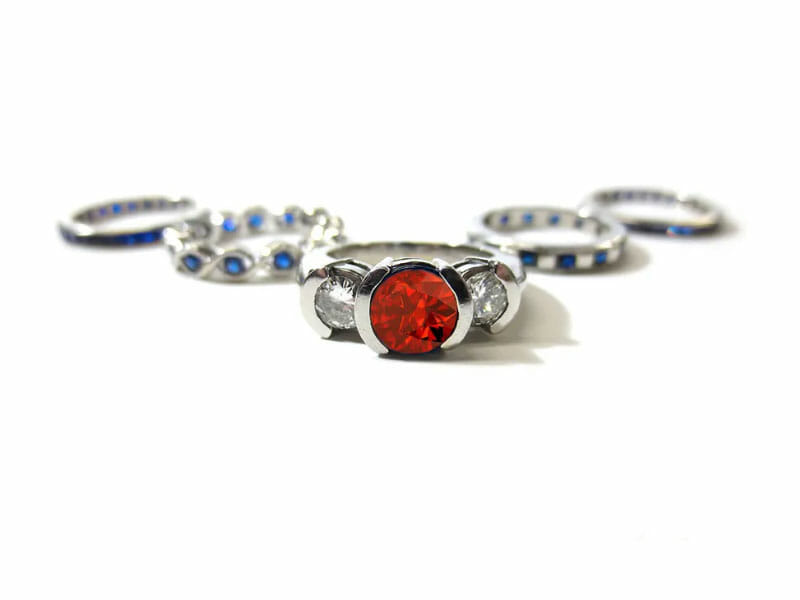
Are Rubies and Sapphires the Same? The Truth About These Precious Gems
You may have not heard the word Corundum before, but chances are you know exactly what it is!
In fact, it’s actually a pretty common rock-forming mineral. Most people are familiar with corundum, but only know it by its common names: “ruby” and “sapphire.”
When it comes down to the chemical composition and the scientific aspect of it, Ruby and Sapphire are the exact same mineral. Sapphire can be found in a wide variety of colors, mostly recognized when found in its blue variety, but when the red variety of Corundum is found then it then becomes classified as a Ruby.
The redness of the ruby is due to the presence of chromium, while a sapphire’s color is based on whatever transition metal happens to be present.
Corundum is the third hardest mineral, next to Diamond and Moissanite, can survive in most environments, and can even remain unaffected by acids.
It has a hardness of nine on the Mohs Hardness Scale, meaning it’s an incredibly tough mineral.
Factors that contribute to easy identification include the hardness, high specific gravity, and hexagonal crystals and parting.
Ruby & Sapphire Jewelry
Because of the hardness and durability, rubies and sapphires are ideal for everyday wear in jewelry.
Some even opt for a ruby or sapphire center stone for their wedding or engagement ring rather than a diamond (if they prefer alternative stones).
Since an engagement ring will be worn every day, some of the softer semiprecious stones are not great options since they tend to acquire surface scratches over time and eventually need to be replaced. However, this won’t be much of a concern with ruby and sapphire since corundum can hold up to plenty of wear and tear!
Natural Ruby & Sapphire
Found as a primary mineral in ingenious rocks, corundum forms naturally, and can also be found in metamorphic rocks as well.
Natural Rubies and sapphires are sourced from many different parts of the world. Alluvial rubies and sapphires are traditionally sourced from places such as Burma, Cambodia, Sri Lanka, India, Afghanistan, Montana, and more.
However, there are other producers who have gained importance in the last few decades as a source for rubies and sapphires in many parts of Africa; Madagascar, Kenya, Tanzania, Nigeria, and Malawi.
Because of this mineral’s hardness and chemical resistance, it persists in sediments even after other minerals have been destroyed, which is why Corundum is often found in alluvial deposits.
Value
Rubies and sapphires when formed naturally with a desirable color and in excellent quality can have tremendous value due to rarity.
Synthetic Ruby & Sapphire
It’s fairly easy to synthesize Corundum, and synthetic gems are pretty common. Corundum is most often synthesized by way of the Verneuil process.
Verneuil Process:
Traces of color producing elements are added to a Corundum solution and the allowed to solidify into synthetic, unprocessed, and shapeless “mineral.”
Additionally, natural ruby and sapphire stones can even have their color deepened artificially through a heat treatment. Dark blue stones may even be made brighter and more desirable.
Value:
Synthetic stones, while they may look desirable in some jewelry pieces, do not have much value on their own, especially on a secondary market, which is mostly due to the lack of rarity factor.
However, because of the hardness of this material, it makes an excellent abrasive, which is excellent when it comes to gem cutting or other industrial purposes.










